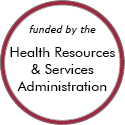Rural Project Examples: Healthcare needs and services
Evidence-Based Examples
Domestic Violence Enhanced Home Visitation Program (DOVE)
Updated/reviewed April 2025
- Need: To reduce violence against pregnant women and women with infants in rural Missouri.
- Intervention: A tool for existing home visiting programs, DOVE was a brochure-based and safety planning intervention for women experiencing interpersonal violence.
- Results: Women receiving the DOVE intervention saw a larger average decrease in number of violent incidents than women in the control group.
keepin' it REAL Rural
Updated/reviewed April 2025
- Need: A drug and alcohol prevention program for middle school students that is specific to rural culture.
- Intervention: An adaptation of the evidence-based keepin' it REAL curriculum was customized for rural middle school students.
- Results: Students showed a reduction in all substance use and less personal acceptability of substance use.
UAMS IDHI High-Risk Pregnancy Program
Updated/reviewed March 2025
- Need: Arkansas had high rates of low birthweight babies, and pregnant patients in rural areas had difficulty accessing specialty obstetric care.
- Intervention: The University of Arkansas for Medical Sciences (UAMS) created the Institute for Digital Health & Innovation (IDHI) High-Risk Pregnancy Program to increase access to care for pregnant patients in an effort to improve outcomes for high-risk pregnancies.
- Results: The program has increased access to care and improved neonatal outcomes for rural Arkansas individuals through a variety of programs and has been recognized by various organizations as a model program.
Mental Health First Aid
Updated/reviewed July 2024
- Need: Rural areas face challenges in access to mental health services, including shortages of mental health providers.
- Intervention: This 8-hour course trains rural community members to recognize mental health and substance use issues and learn how to help someone who is developing a mental health concern or experiencing a mental health crisis.
- Results: Numerous studies of this method have found that course participants are better able and more likely to help others regarding mental health issues.
Project ECHO® – Extension for Community Healthcare Outcomes
Updated/reviewed February 2024
- Need: Increase medical management knowledge for New Mexico primary care providers in order to provide care for the thousands of rural patients with hepatitis C, a chronic, complex condition that has high personal and public health costs when left untreated.
- Intervention: Project leveraging an audiovisual platform to accomplish "moving knowledge, not patients" that used a "knowledge network learning loop" of disease-specific consultants and rural healthcare teams learning from each other and learning by providing direct patient care.
- Results: In 18 months, the urban specialist appointment wait list decreased from 8 months to 2 weeks due to Hepatitis C patients receiving care from the project's participating primary care providers. Improved disease outcomes were demonstrated along with cost savings, including those associated with travel. The project model, now known as Project ECHO® – Extension for Community Healthcare Outcomes — has evolved into a telementoring model used world-wide.
Project ENABLE (Educate, Nurture, Advise, Before Life Ends)
Updated/reviewed February 2024
- Need: To enhance palliative care access to rural patients with advanced cancer or heart failure and their family caregivers.
- Intervention: Project ENABLE consists of: 1) an initial in-person palliative care consultation with a specialty-trained provider and 2) a semi-structured series of weekly, phone-delivered, nurse-led or palliative care coach/navigator sessions designed to help patients and their caregivers enhance their problem-solving, symptom management, and coping skills.
- Results: Patients and caregivers report higher quality of life and lower rates of depression and (caregiver) burden.
PROSPER Partnerships
Updated/reviewed January 2023
- Need: An approach to support sustained, quality delivery of evidence-based programs for youth and families in rural communities.
- Intervention: PROSPER, a program delivery system, guides communities in implementing evidence-based programs that build youth competencies, improve family functioning, and prevent risky behaviors, particularly substance use.
- Results: Youth in PROSPER communities reported delayed initiation of a variety of substances, lower levels of other behavioral problems, and improvements in family functioning and other life skills.
Effective Examples
New Mexico Mobile Screening Program for Miners


Updated/reviewed April 2025
- Need: To increase access to medical screening for miners in New Mexico.
- Intervention: A mobile screening clinic with telemedicine capability screens miners for respiratory and other conditions.
- Results: In a survey, 92% of miners reported their care as very good, while the other 8% reported it as good. The program has expanded to three other states.
Parent Partners
Updated/reviewed April 2025
- Need: To support parents whose children have been removed from the home so that the parents can make the changes needed for the children to return safely home.
- Intervention: A statewide program in Iowa pairs these parents with mentors who have successfully navigated their own child welfare cases.
- Results: Participants' children were more likely to return home than non-participants' children, and participants were less likely to have another child removal within a year of the child coming home.
Wyoming Trauma Telehealth Treatment Clinic
Updated/reviewed April 2025
- Need: To provide psychotherapy to survivors of domestic violence and sexual assault.
- Intervention: University of Wyoming psychology doctoral students provide psychotherapy via videoconferencing to crisis center clients in two rural locations.
- Results: Clients, student therapists, and crisis center staff were satisfied with the quality of services, and clients reported reduced symptoms of depression and PTSD.
For examples from other sources, see:
